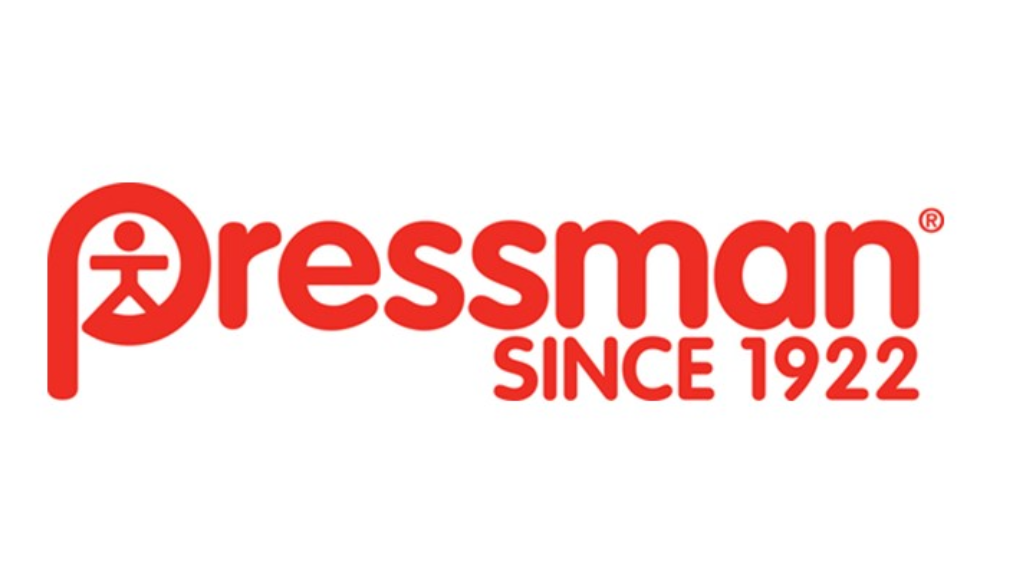The beginnings of Pressman Toy really started even before my Father, Jack Pressman, started his company in 1922. As early as 1916, when Jack was 21 years old, he worked with his father at the Pressman Sporting Goods and Toys store, located in the Harlem section of New York City.
Soon after Jack was discharged from the Army, in 1918, he picked up where he had left off. First working for the Groper Company, makers of metal toys. His next move was to become a partner in the North American Toy Company, a jobbing firm that had started to manufacture its own products. After Jack joined in 1922, the name of the company was changed to J. Pressman & Company. Jack was sales and product development, his partner, Max Eibitz, ran the factory.
In the early years the product line included a variety of what they called "Playthings". There were musical instruments like their Zellophone, embroidery sets, bubble pipes, crayons, archery sets, fishing lines, mosaic beads and a variety of games such as Bean Bag Toss,Bollo Ball ( skill ball), Soldier Ten Pins and lots more!
The first major breakthrough was when Jack found and then manufactured a game initially called Hop Ching Checkers which eventually became known as Chinese Checkers. Fortunately for Jack, he had invested in a marble factory, so when Chinese Checkers took off and many other toy companies wanted to make their own versions, Jack got all the marbles he needed while other companies couldn't get delivery. The success of this game vaulted Pressman into an entirely new level in the industry.
Early on Jack realized the potential of tying into popular culture. He was one of the first to license popular characters such as Little Orphan Annie, Dick Tracy and a variety of Disney characters.
The second era of Pressman started when Jack met and then married Lynn Rambach in 1942. In 1943 their first son, Ed, was born. Soon after, Lynn, who had been a working woman in the fashion industry, joined the company. Initially she was instrumental in bringing fresh new ideas to the graphics of the packaging. Soon you could see her influence on the product line. There was a definite female touch to items such as, the Bonnet Box, the Trousseau Trunk and later on the Doctor, Nurse and Dentist kits.
In 1947 Jack broke up his partnership with Eibitz and re incorporated his new company now called the Pressman Toy Corporation. Jack and Lynn ran the company together for more than a decade. Some of the company's biggest successes during this period were the Doctor and Dentist sets. Lynn would explain that because her children, Ed and me, I was their second son, born in 1949, had been afraid of Doctors and these toys were designed to lessen those fears.
After Jack died in 1959, Lynn was ready to take over on her own. At a time when there were few women running a company in any industry, Lynn was one of only 3 women running a toy company. Ruth Handler shared the leadership of Mattel with her husband and Beatrice Alexander founded and ran the Alexander Doll Company.
Lynn had a flair. She was known for her stylish hats that she wore everywhere and wonderful parties that she threw during every Toy Fair. During the years Lynn was President, the company was one of the first to use TV as a way of promoting their toys. Succeses like the Superman Kite and Wonder Art were among the hits she created. Lynn followed the licensing strategy as well. Shari Lewis, Disney, the Lone Ranger, and Roger Maris are just a few of the many licensed products under her leadership.
The third era began in 1971 when I joined the company. After I graduated from Boston University, I had no real direction but my older brother, Ed, said "Jim, why not join the Toy Company. It will be good experience for you while you decide what you want to do." I had worked many summers in the factory in Brooklyn during my high school years, so it wasn't unfamiliar to me. That's where I started and where I learned that side of the business.
By 1977, after I had helped orchestrate the move of the factory to New Brunswick, New Jersey, my Mother felt I had proven myself and she named me President. During my years I gradually turned the focus of the line to board games. The first major move was to TV promote a game called Tri-Ominos. The game had first been introduced in 1968, and for years had grown without any promotion. By concentrating on Tri-Ominos, we were able to expand distribution and increase sales dramatically . Tri-Ominos was for me, what Chinese Checkers was to my Dad. It soon generated half of our total sales volume, which, for the first time in the company's history reached $6 Million in 1978. In the years that followed we added other classic games such as Rummikub and MASTERMIND. The great thing about games, and why I wanted to concentrate our efforts on games, is that they can become perennial best sellers. Unlike most of the industry that follows the latest hot trend, games can go on from generation to generation. They formed the backbone of our company. We also repackaged the basic games, like Checkers, Chess and Chinese Checkers in a bold red background behind a large product shot. By using the one design for the entire line we were able to become the industry leader in these generic games.
That said, the greatest successes during my time as President were home versions of popular TV game shows. The first was Wheel of Fortune, then came Nickelodeon's Double Dare and finally our largest success , Who Wants To Be A Millionaire. That's when we doubled our sales from $50 million to $100 million, with Millionaire accounting for half the volume. But there were other areas in the game business where we were very successful. Action games like Topple, Thin Ice, Jumpin Monkeys and Dizzy Dizzy Dinasaur were all successes but when we introduced Gooey Louie it created an entirely new category. This was the first game that dared to introduce a character where you pulled gooeys (boogers) out of his nose . And if you pulled the wrong gooey, his brains would pop out, and you'd lose the round. It was a huge success.
We continued to test the norms with games like Hydro Strike, which splashed the losing player in a two-man pinball game with a dose of water. A game with water inside the home had been a no no. Not anymore!
Along the way I was helped out by our daughter, Kate. Just like my Mother found inspiration from her children to develop the Doctor and Nurse kits, I found licenses like Scooby Doo and Land before Time, among others, by following the properties that Kate became a fan of.
The other key to my success was my best friend and wife, Donna. She was with me all the way. Ready to offer her sound advice and council me through the difficult times. I couldn't have done it without her.
When I turned 65 I was ready to move on. I had run the company for 37 years, the same amount of time that my Father had run the company. I was fortunate to find another family run business, Goliath, who was interested in expanding in the U.S. market. I had known their President and founder, Adi Golad, for decades. Adi had licensed Tri-Ominos from us for Europe and our business relationship and friendship had grown over the years. The continued success of Pressman, now run by David Norman out of Goliath's North American home office in Texas, has been wonderful to watch. They continue to grow many of the games like Rummikub, Let's Go Fishin' and Gooey Louie, while introducing many new games under the Pressman brand.
That's the short story of how Pressman has survived and flourished.
100 years young in 2022.










































